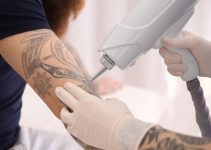Have Afro american hair transplant different methods or requirements? We will answer these questions and many more in this article. Hair loss was seen as an incurable condition as recent as 50 years ago. Since then, transplant operations have been on the rise.
Read more about Follicular unit extraction (FUE) hair transplant, cost and pictures.
Surgeons can now successfully transfer hair from one area to another, regardless of gender, race or type. Including beard and eyebrow transplants, hundreds of thousands of surgeries have been done worldwide in the last year alone. As commonplace as such operations are these days, does it vary for different people?
How Does Afro Hair Transplant Work?

Source: yetkinbayer.com
Simply put, afro hair transplant is the transfer of grafts from one area of the body to another. The area from which the grafts are harvested is called the donor area. Preferably, an area where the follicles are strong and dense is picked to be the donor.
On the other hand, the receipted area receives the grafts from the donor area. The amount of grafts to be transplanted depends entirely on the surface area. A full head of hair corresponds to about 6000 grafts. The pricing also depends on a few parameters, such as the clinic, graft amount and afro american hair transplant type.
There are several different methods of carrying out a hair transplant operation. For instance, Follicular Unit Transplant (FUT) is harvesting a strip of the scalp and planting it to the recipient area.
The one upside of FUT is that this method doesn’t require patients to shave their head. However FUT has been dethroned by the more sophisticated method:
Follicular Unit Extraction, and is now considered to be old-fashioned. Follicular Unit Extraction, or FUE, is executed by harvesting and planting individual grafts. This ensures more freedom over the surgeon and grants the possibility of creating a more natural hairline.
Regardless of popularity, afro american hair transplant clinics offer both methods to patients. As the more tedious and advanced option, FUE usually costs significantly more than FUT. Yet, it also gives undeniably better results.
Difference of Afro-American Hair Transplant
Afro-American hair transplant compared to other types has its differences, whether that be shape, strength or biological and chemical nature. For starters, the shape is significantly curlier compared with others. Ranging from 4a to 4c, Afro texture is known for its very strong coil pattern.
Unlike curled Caucasian or Asian curls, Afro curl shape begins before the strand grows out of the scalp. With other types, the growth starts out as straight and begins curling once the strand has grown past the scalp.
African hair transplant strands have a much shorter and wider, oval-like cross-section. Additionally, Afro strands are very thin, which allows the hair to curl as intensely as it does. Contrary to popular belief, Afro is the least dense type in terms of strand per centimeter square.
Due to the shrinkage of the tightly coiled pattern, length growth is also slower in Afro textures. With regards to the chemical composition, there is a layer of sebum surrounding the shaft that protects the strand. This also gives a more coarse feeling to the touch.
More often than not, Follicular Unit Extraction is preferred for Afro-American texture, as it’s more suitable than Follicular Unit Transplant. As mentioned before, the curl pattern of Afros begins before the strand grows out of the scalp.
To preserve the strand and the follicle, surgeons must harvest the grafts without harming the shaft in any way.
This means that the FUE method should be applied at a specific angle. Such a technique demands skillful hands and elongates the surgery duration. Therefore, not every doctor might be equipped with undertaking such a responsibility.
Finding Afro Hair Transplant Clinic

Have you decided that hair transplant is the right option for you? Now here comes the tricky part. Afro-American hair transplant requires specialty in the area. Trusting just any surgeon with an operation as permanent as hair transplant would be like gambling.
This type of surgery should be put in hands of someone with extensive knowledge in the field.
Not only that, but someone that understands the historical and cultural importance of it as well. Afro American transplant methods don’t differ between hair types but there are tricks of the trade that can drastically improve the outcome.
How To Find Afro-American Hair Transplant Clinic
In the search for a suitable clinic, it’s crucial to pay attention to their previous work. If their clientele is made up exclusively of Caucasian patients, an Afro might be a challenge for them. It’s much safer to work with clinics worldwide that specialize in Afro-American hair transplant. One of the best clinics in the world, Hair of Istanbul, has had numerous clients of African descent.
With years of experience, they excel in customer satisfaction. Their social media sites make their work quite accessible. Anything from clips from the operation room to before and after pictures can be found on their Instagram and Youtube pages.
This is also a great way to reach out to recent patients and ask them about their experience with the clinic.
Afro-American Hair Transplant Aftercare

The operation tends to leave the scalp feeling very sensitive and fragile. To ensure that the grafts latch on properly, patients must take great care of their scalp for two to three weeks afterwards.
Initially, the head is wrapped up with a bandage for protection. For the first few nights, patients are encouraged to sleep on a silk pillowcase. It also helps to sleep with multiple pillows, raising the head by 45 degrees.
This bandage can be undone the night of the operation, before going to bed. After about three days, a special shampoo such as Panthenol should be used to get rid of the build up. Use very light pressure and circling motions while shampooing. If possible, get a family member or a friend’s help for cleansing.
There are also useful products for boosting growth if you are impatient. Turkey’s best afro-american hair transplant clinic advises Kerastase, which has some high-quality serums, such as the Aminexil Serum or the Densifique Gel.
If you’d like to go down the natural route, essential oils are your friend. Mix Jamaican Black Castor oil and Jojoba oil, apply on the scalp for 20 minutes before washing off. This blend not only promotes growth, it also helps with blood circulation in the scalp.







